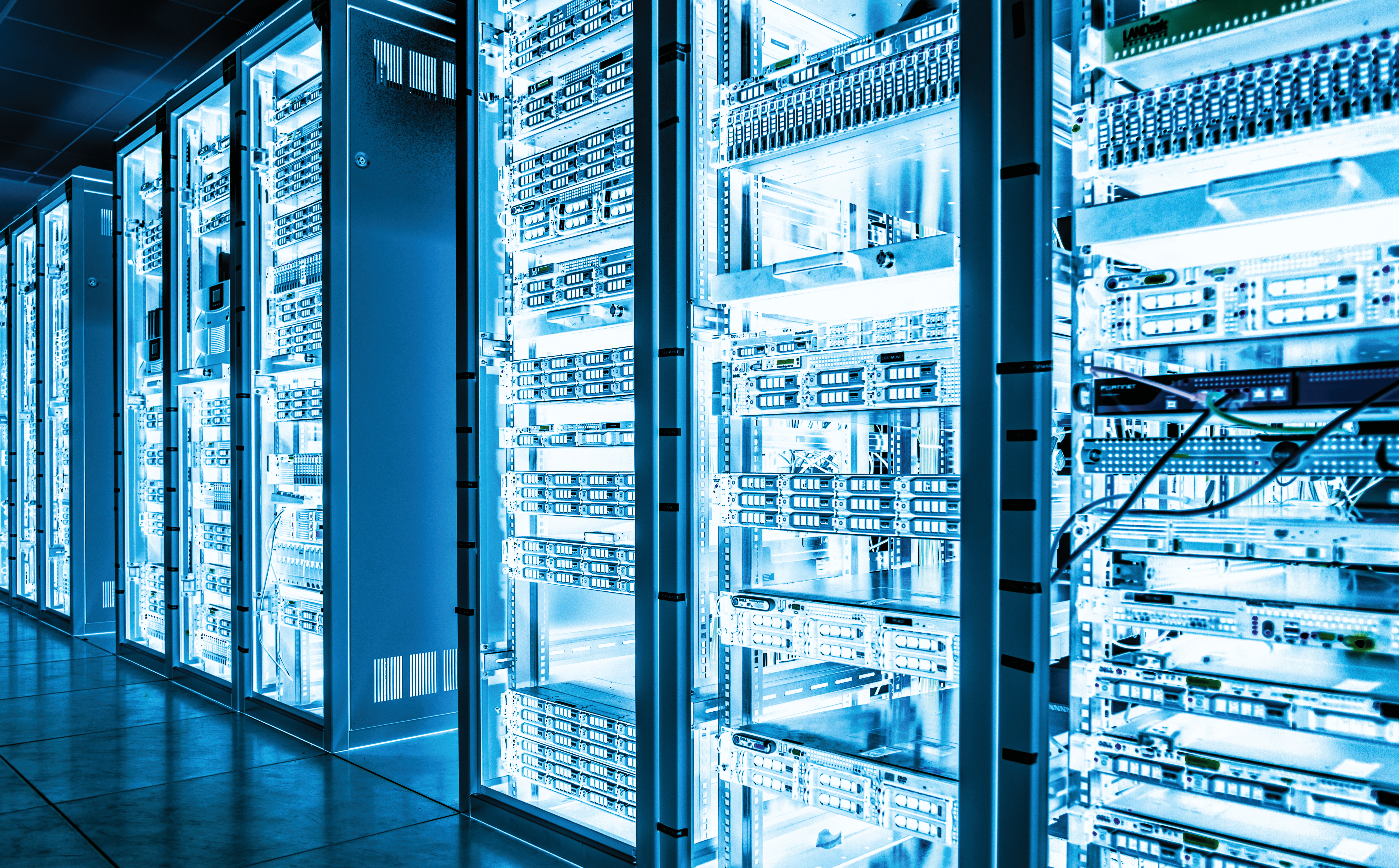Data centres continue to be a headline grabbing subject around the world, with their supporters highlighting their technological and economic necessity, whilst their detractors focus on their environmental impacts. However, with new research suggesting there were 2,641 live data centre sites in Europe and the Middle East in Q1 of 2025, an 11% increase year on year, there seems to be little sign of the sector slowing down. With this in mind, Alfredo di Blasi, EMEA Market Leader for MicroE and Data Centres, has examined the potential impact of data centres in 2025 and explores some of the methods data centres can employ to minimise their environmental impact.
.jpeg?width=912&height=589&name=AdobeStock_302854234%20(1).jpeg)
Water is essential to the effective running of data centres. It is central to many cooling systems, from chillers and cooling towers to liquid cooling systems, with the volumes of water required being astronomical. According to the World Economic Forum (WEF), a 1 MW data centre can use up to 25.5 million litres of water annually just for cooling – equivalent to the daily water consumption of approximately 300,000 people.
This naturally puts a huge strain on surrounding regions, particularly those that already face water shortages, or in locations where multiple data centres are located close together. Virginia in the US, home to the world’s greatest concentration of data centres, saw water usage increase from 1.13 billion gallons to 1.85 billion gallons between 2019 and 2023, for example.
In the context of climate change, where we’re frequently seeing higher average temperatures and hotter summers in combination with water scarcity, the thirst of data centres is a challenge that needs to be addressed.
Prioritising water reuse
Much of the challenge stems from difficulties in recycling the water that is used in data centre cooling, with roughly 80% of the water used in cooling towers evaporating during the cooling process, and remaining water then discharged to municipal wastewater facilities.
However, there are other cooling technologies available that are more sustainable and can help to reduce water consumption. One example would be closed-loop cooling systems, where water circulates continuously through a system and undergoes cooling before being reused. These can optimise industrial processes while reducing water consumption, but in these systems, treatment of the water is critical.
Just as cooling systems play a key role in protecting data centre equipment, it is important for operators to take steps to protect cooling systems themselves too.

Prioritising water quality
Regardless of the cooling method used, the quality of the water can have a major bearing on the protection of these systems, as well as their performance, helping to maximise heat transfer efficiency, ensuring that cooling systems are working as effectively as possible.
Water that isn’t treated may lead to several challenges. The presence of suspended solids may disrupt fluid flow rates and distribution, for example. Particles could become lodged in components such as valves, accelerate corrosion, or lead to sludge deposits. Biofilms, meanwhile, can create insulating layers that reduce heat transfer, while corrosion and debris erosion can reduce the lifespan of equipment.
These adverse effects can be addressed using chemical treatments. At Veolia, we’re able to provide tailored chemical programmes to optimise the water cycle of your entire site, extend system lifespans, improve risk mitigation and reduce unplanned downtime. This is achieved through effective protection against scale deposition, corrosion, fouling, microbiological growth and legionella
Chemical usage in data centre water systems can impact the environment
With that said, it’s crucial to make the right choice when it comes to water treatment. Get it wrong, and harmful or unsuitable chemicals could undermine efforts to improve environmental footprints.
Traditionally, data centre water treatment methods have relied heavily on the use of chemicals such as chlorine, which can pose substantial challenges concerning both environmental impact and operational safety. Not only does handling and storing these chemicals in data centre facilities present operational and safety hazards, but the use of traditional biocides and chemicals can result in environmental pollution and harm aquatic ecosystems if not managed properly.
Thankfully, there are alternative treatment methods and chemicals that can be used that are less operationally challenging and environmentally damaging. Indeed, some of the common water treatment methods now used in data centres include water softening, reverse osmosis and direct nanofiltration.

Tailored solutions are key
At Veolia, our SIRION™ Mega SF and TF models have been designed to offer high flux, low energy reverse osmosis (RO) with minimal need for additional civil engineering. As a result, 98% of dissolved organics can be removed from wastewater, making it suitable for recycling and in turn use in cooling systems, all while saving up to 50% on electrical power versus a conventional unit. When used in combination with our Ionsoft™ systems, RO units can additionally reduce the amount of water put to drain, enabling data centres to operate even more sustainably while further reducing operating costs.
For decades, we have created innovative solutions and patented cooling water treatment technologies to protect critical assets and maximise heat transfer efficiency. This includes:
- Alkaline enhanced chemistry (AEC): Halogen-stable scale inhibitor allowing systems to operate in alkaline conditions while utilising oxidising biocides.
- Stress-tolerant polymer (STP): Patented dispersant technology boasting unmatched performance in minimising phosphate, iron and solids deposition.
- Engineered copper passivation (ECP): Enhanced capabilities of HRA yellow metal passivation technology with an improved environmental footprint.
- Engineered carboxylate oxide (E.C.O.) Film: Cutting-edge technology utilising surface science to engineer a non-phosphate cooling water treatment program.
- Pre-cleaning & passivation: Designed to be used online and offline, and restores cooling operating efficiencies to peak performance levels, without the need for strong, inorganic aid cleaning agents.
Efficient use of water
Equally, data centres need to do more than just use clean water, treated in a sustainable and effective manner. Those cooling solutions themselves must also use water in an efficient way to reduce the environmental stresses associated with data centre cooling.
Here, closed-loop cooling systems that involve wastewater recycling or rainwater harvesting can play a key role, and potentially reduce the use of freshwater by as much as 50-70%, for example.
Embracing circular water management strategies such as these will undoubtedly be vital in tackling environmental pressures as the demands on data centres continue to increase in the coming years. Indeed, in the context of the astronomical volumes of water used in data centre cooling, small changes can have a huge impact.
By approaching water systems holistically, data centres will be able to save resources across the whole cycle of data centre operations, where water plays an essential role throughout. With sustainability, water scarcity, reuse and resource efficiency under the microscope, data centres must be proactive with their approaches.
Where do we fit in?

Need help in making marked, consistent improvements? Veolia can support you in establishing cost-effective and sustainable data centre technologies to meet industry challenges. Our global solutions can optimise your assets, reduce water usage, and enhance site profitability – positively impacting sustainability goals your bottom line.



